Browse articles related to the Changing Tides project. This is a research study in Southwest Alaska exploring the connections between coastal brown bears, invertebrates like clams and mussels, and what influence human activities have on bear ecology.
-
Article 1: Changing Tides: Intertidal Invertebrates, Bears, and People
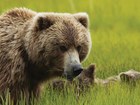
Clams and other intertidal invertebrates are important early season forage for coastal brown bears along the Alaska Peninsula. A 2015 study will expand on this knowledge through a variety of projects. Working with park partners, park researchers will evaluate the impacts of changing ocean conditions on intertidal communities, gaining valuable insight for long-term preservation of this dynamic nearshore connection. Read more
-
Article 2: Research Project: Brown Bear Tracking
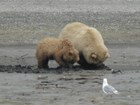
Although remote, the Alaska Peninsula is still vulnerable to natural and human-caused disturbances. These disturbances could affect the amount of food available for brown bears. As part of a larger project looking at the nearshore environment of the peninsula, biologists will outfit 12 bears with GPS collars, to track their movements between different habitats, and conduct direct observations on these bears to collect data on their foraging behavior. Read more
-
Article 3: Changing Tides: Bear Researcher Videos
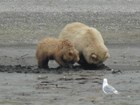
Check out videos documenting parts of the Changing Tides research project! Read more
-
Katmai National Park & Preserve
Article 4: Changing Tides: 2016 Midseason Update
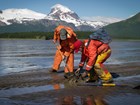
Highlights from this year's study so far include taking tissue samples from bivalves (e.g., clams), assessing bear health and discovering with a camera trap that bears may be actively predating upon otters! Read more
-
Katmai National Park & Preserve
Article 5: Coastal Research - Spring 2016 Update
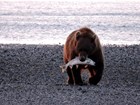
For the second consecutive summer, researchers are putting GPS collars on coastal bears in Katmai as part of the Changing Tides project. The May 2016 collaring effort was a great success, with near-perfect weather aiding in the outfitting of ten bears with GPS collars. Read more
-
Article 6: Changing Tides: April 2016 Recap
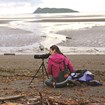
The Changing Tides project is a three-year study examining the link between the marine and terrestrial environments, specifically between coastal brown bears, clams and mussels, and people. It is a cooperative project of the National Park Service, U.S. Geological Survey, Alaska Sealife Center, and Washington State University. Preliminary data from the summer of 2015 creates more questions to study. Read more
-
Katmai National Park & Preserve
Article 7: Changing Tides: August 2015 Update
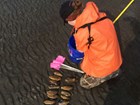
Several months into the Changing Tides project, scientists are beginning to see patterns in the foraging movements of collared bears along Katmai's coast. The bears being studied gained significant weight already, even before salmon runs had reached area streams. Data like this will help scientists analyze just how important invertebrates like mussels and clams are to grizzly bear health and their success raising cubs. Read more
-
Katmai National Park & Preserve
Article 8: Brown Bear Research Project: July 2015 Update
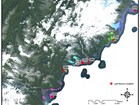
By tracking the movements of bears and assessing body composition, biologists can examine their use of different foraging areas and the importance of different food to overall bear health and survival. This July 2015 update explores the first steps taken in the "Changing Tides" project. Read more
